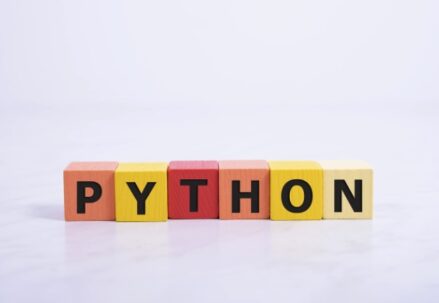Importing the datetime Module
The datetime module allows you to work with dates and times. You can import specific classes or functions from the module like this:
| from datetime import datetime, date, time |
This line of code allows you to access datetime functions like datetime.now() and date.today() directly.
Third-Party Module Imports
While Python’s standard library is extensive, there are countless scenarios where you may need functionality not covered by the standard modules. In such cases, you can turn to third-party modules, which are developed by the Python community and can be easily added to your Python environment using package managers like pip. Here’s how you can import third-party modules:
Installing Third-Party Modules with pip
Before importing a third-party module, you must install it using pip. For example, to install the requests module for HTTP requests, open your terminal or command prompt and run:
| pip install requests |
Once the module is installed, you can import it in your Python script.
Importing the requests Module
Now that you’ve installed the requests module, you can import it into your Python script like this:
| import requests |
With the requests module imported, you can make HTTP requests to web servers and handle their responses in your Python programs.
Best Practices for Python Import
Importing modules and packages in Python is a fundamental aspect of writing clean and efficient code. To ensure your code remains organized and maintainable, consider the following best practices:
Group Your Imports
Start your Python files by organizing your imports into logical groups. This not only makes your code more readable but also helps you identify and manage dependencies more efficiently. The typical order for grouping imports is as follows:
import sys
import os
import numpy as np
import pandas as pd
from my_module import my_functionIn this example, standard library imports (e.g., sys, os) come first, followed by third-party library imports (e.g., numpy, pandas), and finally, local application/library-specific imports (e.g., my_module).
Avoid * Imports
It’s considered a best practice to avoid using wildcard imports like from module_name import *. Such imports can introduce ambiguity and conflicts in your codebase because you’re importing all symbols from the module, potentially overwriting existing names and making it unclear where a particular symbol comes from. Instead, explicitly import only the functions, classes, or variables you need:
| from math import sqrt # Importing only the sqrt function from the math module |
Use Absolute Imports Over Relative Imports
Absolute imports are better than relative imports. Absolute imports give you the full path to the module or package, so you can see where it fits in the layout of your project. This makes things clearer and makes sure you load the right module. Relative imports, on the other hand, are based on where the current module is located and can lead to mistakes, especially in bigger codebases. As an example:
| # Absolute import from my_package.my_module import my_function # Relative import (not recommended) from .my_module import my_function |
Advanced Import-Module-Python Techniques

In Python, importing modules is a fundamental aspect of organizing and utilizing code. However, there are advanced techniques that can enhance your module importing capabilities. Let’s explore two such techniques: dynamic module importing and handling import errors. These techniques can help you create more flexible and robust Python applications.
Dynamic Module Importing
Dynamic module importing involves importing modules at runtime based on specific conditions or requirements. This can be achieved using the importlib library. Let’s delve into how this technique works.
The importlib library provides a set of functions that allow you to import modules dynamically. Here’s how you can use it:
import importlib
module_name = "mymodule" # Replace with the name of the module you want to import dynamically
try:
module = importlib.import_module(module_name)
# Now, you can use functions and classes from the dynamically imported module
except ImportError:
print(f"Module '{module_name}' not found.")This code demonstrates how to dynamically import a module named “mymodule.” You can replace “mymodule” with the actual module name you want to import.
Dynamic module importing is especially useful when you have multiple modules with similar functionality, and you want to choose which one to use based on certain conditions or configurations.
Handling Import Errors
Importing modules dynamically can lead to import errors if the specified module is not available. To handle such errors gracefully, you can use try-except blocks.
Here’s an example of how to use try-except blocks to handle import errors:
import importlib
module_name = "non_existent_module" # Replace with the name of a module that may not exist
try:
module = importlib.import_module(module_name)
# Now, you can use functions and classes from the dynamically imported module
except ImportError as e:
print(f"Error importing module '{module_name}': {e}")In this code, we attempt to import a module named “non_existent_module,” which does not exist. If an ImportError occurs, we catch the exception and print an error message.
By using try-except blocks, you can prevent your program from crashing when a module is missing or when there are other import-related issues.
Conclusion
The Python import system is a robust and flexible tool that, when understood and used correctly, can greatly enhance the functionality of your Python scripts. Whether you’re using standard library modules, third-party modules, or even dynamically importing modules, the import-module-python process is integral to Python programming. By following the best practices and techniques outlined in this article, you’ll be well on your way to mastering Python imports.
FAQs
What happens if I import a module twice?
Python caches imported modules, so importing a module multiple times doesn’t reload or reinitialize it.
Can I alias imports in Python?
Yes, you can use aliases for imports using the as keyword, like import numpy as np.
What’s the difference between import module and from module import *?
import module imports the entire module, while from module import * imports all accessible objects from the module into the current namespace.
How can I install a third-party module?
Use a package manager like pip: pip install module_name.
Is it possible to import a module based on a string variable?
Yes, using importlib.import_module(‘module_name_as_string’) allows you to import a module based on a string.




